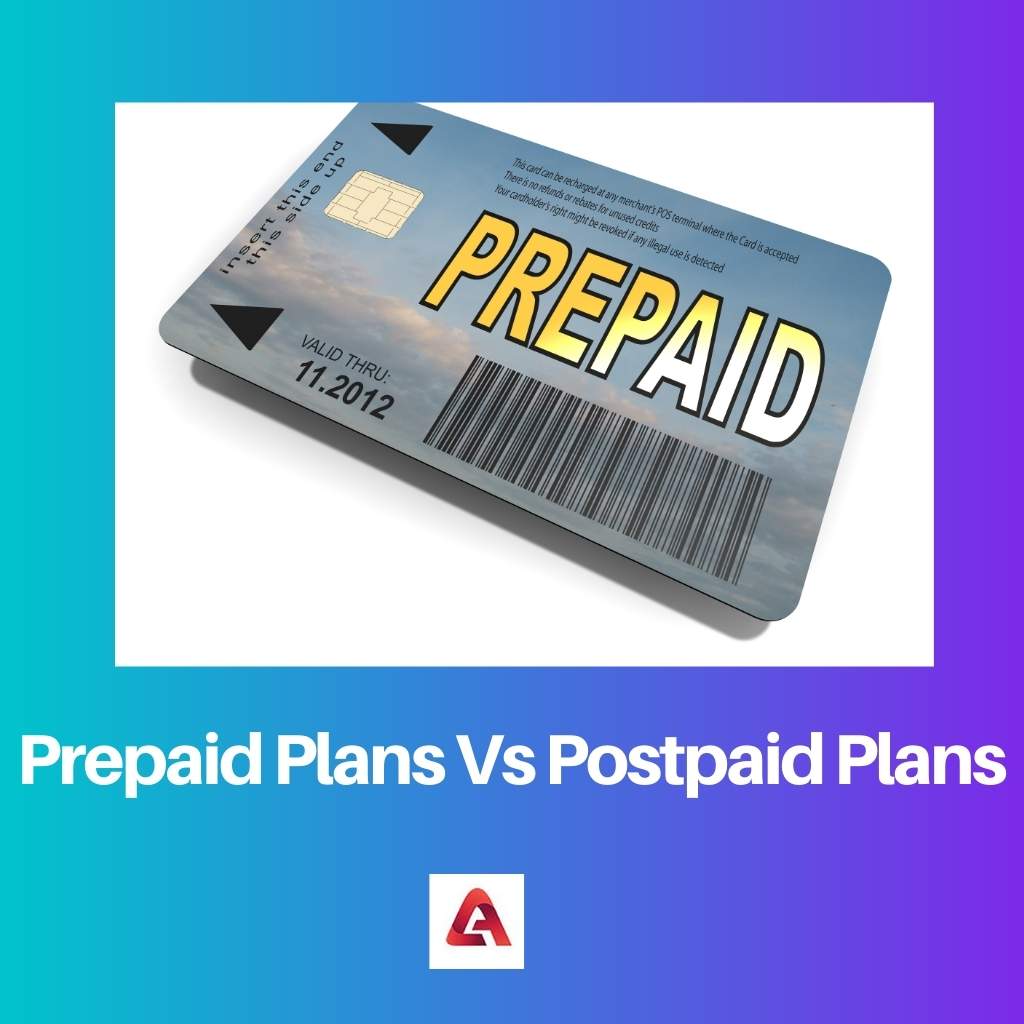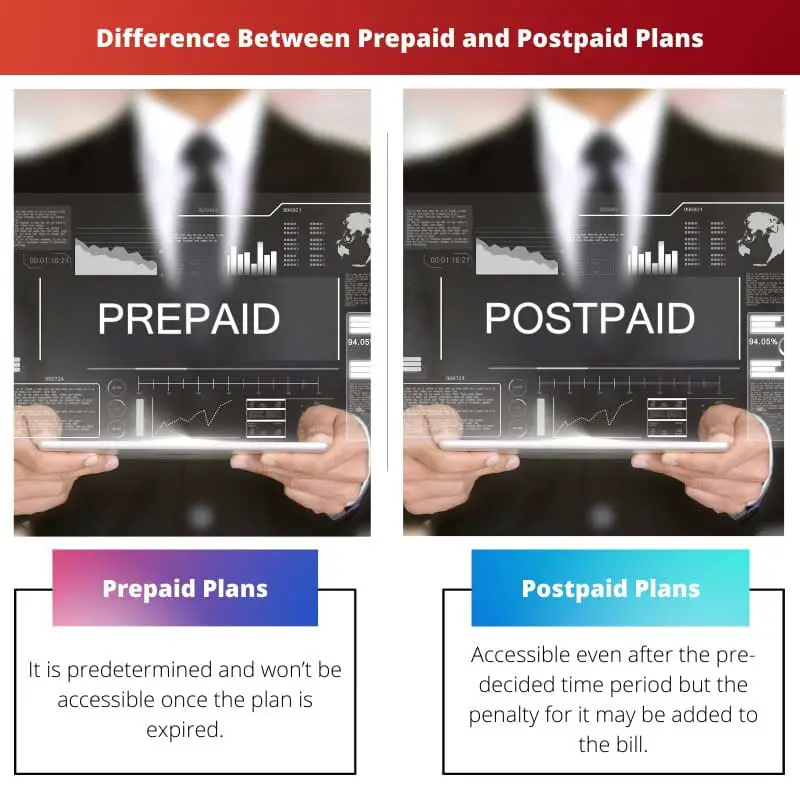The world is moving ahead at a serious pace, relying on technology to get everything done. As a result, mobile phones have become one of the most essential tools to do so.
Mobile phones were initially invented to stay connected with anyone who is not physically approachable when needed.
However, it has evolved into something much more, and hence, cellular networks have also kept up with the pace to provide a seamless experience. The two most commonly used are Prepaid and Postpaid connections.
Key Takeaways
- Prepaid plans require you to pay in advance, while postpaid plans require you to pay after using the services.
- Prepaid plans come with limited features and usage, while postpaid plans offer more features and unlimited usage.
- Prepaid plans are suitable for those who want to control their spending, while postpaid plans are ideal for those who need constant access to services.
Prepaid Plans Vs Postpaid Plans
A prepaid plan is a budget-friendly cellular service where users pay a sum of money in advance to avail of telecom services. It has a limit on talk time, SMS usage and data. Postpaid plans are expensive cellular services where users pay for data usage at the end of every month. Here, there is no limit on data usage.

Prepaid Cellular Service is the one for which users pay upfront before using.
The users purchase a recharge, commonly known as a Prepaid Plan, which is then used as mobile credit to do various tasks such as calling, texting, using the internet, etc.
Postpaid Cellular Service is the one for which users pay at the end of a time period. The users are provided with services beforehand, and they pay the bill for it later on.
The time period for provided services is pre-decided by the user and the provider. It can be 1 month, 6 months, 1 year, etc., depending on the plans available through the provider.
Comparison Table
| Parameters of Comparison | Prepaid Plan | Postpaid Plan |
|---|---|---|
| Cost Of Services | Mostly budget-friendly | Slightly more expensive than Prepaid |
| Cellular Plans | It is predetermined and won’t be accessible once the plan is expired | Accessible even after the pre-decided time period but the penalty for it may be added to the bill. |
| Data Limit | Offers limited data | No limit of usage |
| Customer Care Service | Generally poor and a long waiting time | Precise and customer friendly |
| Flexibility | Provides liberty to customize plans according to the needs. | Only specific plans are available that cannot be customized. Any additional services are charged extra. |
What Are Prepaid Plans?
As the name suggests, Prepaid Plans are the ones for which you pre-pay. The users initially pay money to a provider for recharge, and then this recharge is credited to their mobile phones for further use.
This credited recharge can be used to make calls, send text messages, or even use the internet.
All the major companies provide prepaid SIM cards, and they are very easy to get with valid documents and a government-approved ID. Some common providers are Vodafone, Airtel, Reliance Jio, etc.
Since the launch of Reliance Jio Prepaid Sim in 2016, competition in the market has risen by a tremendous height because of what Jio has offered to its users.
As a result, other companies also started providing very competitive plans at an aggressive price. Hence, the recharge prices fell by a huge margin.
Prepaid plans are the most commonly used. According to a report by the World Bank, 96% of SIM card users in India are prepaid customers.
What Are Postpaid Plans?
Postpaid Plans are the cellular network plans for which are paid for after the usage is done. The payment is in the form of a bill that is received after a pre-decided time period.
This time period can be anything depending on its provider and the plan used by the customer.
Almost all the companies providing prepaid plans provide postpaid, too.
Providing postpaid sim cards is a detailed yet simple procedure as it requires a lot more information about the customer, such as residential proof, a photo ID card, and a self-attested photograph.
Nowadays, the prices of various postpaid plans have also become much cheaper than before.
Postpaid plans are used by businessmen, call centres, or various government sectors in order to provide this service to their employees.
Main Differences Between Prepaid Plans and Postpaid Plans
- Postpaid has its added advantages over prepaid. For example, many providers provide Netflix, Hotstar, Amazon Prime, and various other free subscriptions with the plan.
- Another advantage postpaid has over prepaid is the seamless experience it provides. Postpaid provides unlimited data to its users, while prepaid users have a limited recharged credit to use. As a result, prepaid customers can’t use any services before they purchase a recharge again.
- Postpaid plans have better network quality than prepaid plans. Occasionally, prepaid networks can fluctuate, causing the internet speeds to go down or temporary degradation of call quality.
- While postpaid has its benefits, it can also surprise you with bill shocks. Bill Shock is when the bill for services is higher than the actual plan bought. This happens due to irresponsible use, overuse, and/or any of the provider’s policies. Prepaid networks, however, are much simpler, and the user always knows the validity and limit of their use.
- Since prepaid plans easily fulfil most people’s needs, they are the right choice for a normal user. In contrast, postpaid plans are mostly a fit for those who need unlimited data, uninterrupted phone calls, and a constant high speed internet etc. It provides a seamless experience. The customer service provided to postpaid customers is also a smooth process and the issues are resolved immediately.

- https://papers.ssrn.com/sol3/papers.cfm?abstract_id=2327734
- https://www.journals.resaim.com/ijresm/article/view/793

The debate about Prepaid and Postpaid services can sometimes be complex, but this article simplifies the comparison and enhances understanding about these mobile plans.
Agreed. The article facilitates an easy comprehension of the differences between prepaid and postpaid cellular services.
Being well-informed about the differences between postpaid and prepaid plans can aid individuals in deciding the best choice for their requirements.
Indeed, having a comprehensive understanding of prepaid and postpaid plans allows for a better decision-making process when choosing a mobile network plan.
The clear comparison makes it easier to identify the benefits and drawbacks of prepaid and postpaid plans.
This post provides a factual insight into prepaid and postpaid plans, enabling users to make an informed decision regarding their mobile network services.
The factual information provided in the article makes it a valuable resource for understanding the nuances of prepaid and postpaid plans.
This article sheds light on the intricate workings of prepaid and postpaid plans and can be immensely beneficial for consumers.
This article gives a clear and comprehensive comparison between Prepaid and Postpaid plans. It is informative for every person who is looking to choose a plan that suits their needs the best.
The references provided also add credibility to the article and make it a reliable source of information on this topic.
I completely agree with you. The article has provided in-depth information about the postpaid and prepaid plans in a very intelligible way.
Understanding the prominent variances between prepaid and postpaid services is essential for users to select the most suitable mobile plan for their distinct needs.
Precisely. The thorough comparison enriches the readers with a coherent understanding of prepaid and postpaid services.
The detailed comparison, along with the inclusion of key takeaways and the reference links, adds an element of credibility and information-richness to the article.